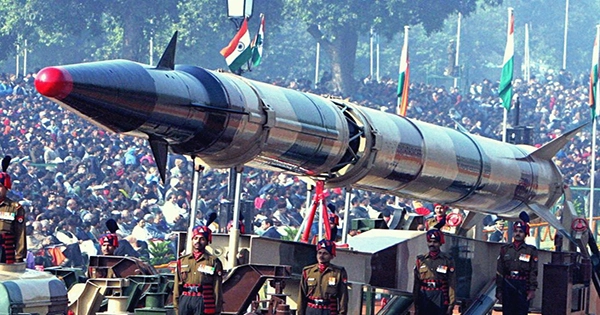There has been talk since Russian soldiers invaded Ukraine that Russia will deploy “tactical nuclear weapons” against its neighbor. But what are tactical nuclear weapons, and how do they vary from “strategic” nuclear bombs like the ones used on Hiroshima and Nagasaki during WWII?
Strategic nuclear weapons are probably the ones you’re most familiar with, even if you don’t know what they’re called. The “Fat Man” and “Little Boy” bombs that were dropped on Nagasaki and Hiroshima are among them. Nuclear weapons that are meant to be dropped on strategic targets are known as strategic nuclear weapons. Strategic nuclear weapons are meant to be used far from battlefields, away from any potential damage to the launching state’s citizens and military. They have a significantly higher yield than tactical nuclear bombs.
The term “strategic nuclear weapons” is defined differently by different countries, although it typically refers to nuclear weapons that may be launched across a long or intercontinental range. Smaller devices (used, for example, to destroy an enemy missile silo) launched over a long range might be classified as strategic nuclear weapons since they can cause massive and indiscriminate damage to wide areas.
Tactical nuclear weapons (also known as non-strategic nuclear weapons) account for 30-40% of American and Russian nuclear arsenals, as well as close to 100% of nuclear weapons stockpiles in other nations. They include weapons that may be fired from the air, sea, or land, and are designed for shorter-range employment than strategic nuclear weapons. As with strategic nuclear weapons, the definition varies by nation, with some (such as France, who considers its entire arsenal to be strategic) considering shorter-range weapons to be strategic rather than tactical. However, in terms of payload, they are typically smaller than strategic nuclear weapons and are intended for smaller strikes or combat attacks.
They are not meant to create extensive radioactive fallout or destruction due to their low range, either for tactical reasons or to avoid causing harm to the launcher’s own side. Short-range missiles, land mines, artillery rounds, depth charges, and torpedoes are all examples. There have been agreements to limit the strength and scale of Russia’s and the United States’ tactical nuclear arsenals, but the weapons are not as tightly monitored as their bigger equivalents. Though lesser in terms of devastation, they come with their own set of risks (being nuclear bombs), not the least of which is the possibility of escalation if deployed on a battlefield.
In an essay for Nuclear Threat Initiative, Senior Fellow Nikolai Sokov of The James Martin Center for Nonproliferation Studies argued, “In some ways, [tactical nuclear weapons] are more hazardous than strategic weapons.” “The presence of TNWs in national arsenals poses a threat to global security due to their small size, vulnerability to theft, and perceived usefulness. And, while Russia and the United States have distinct motives for changing their minds on nuclear weapons, it might set a hazardous precedent for other countries “Sokov emphasized.
















